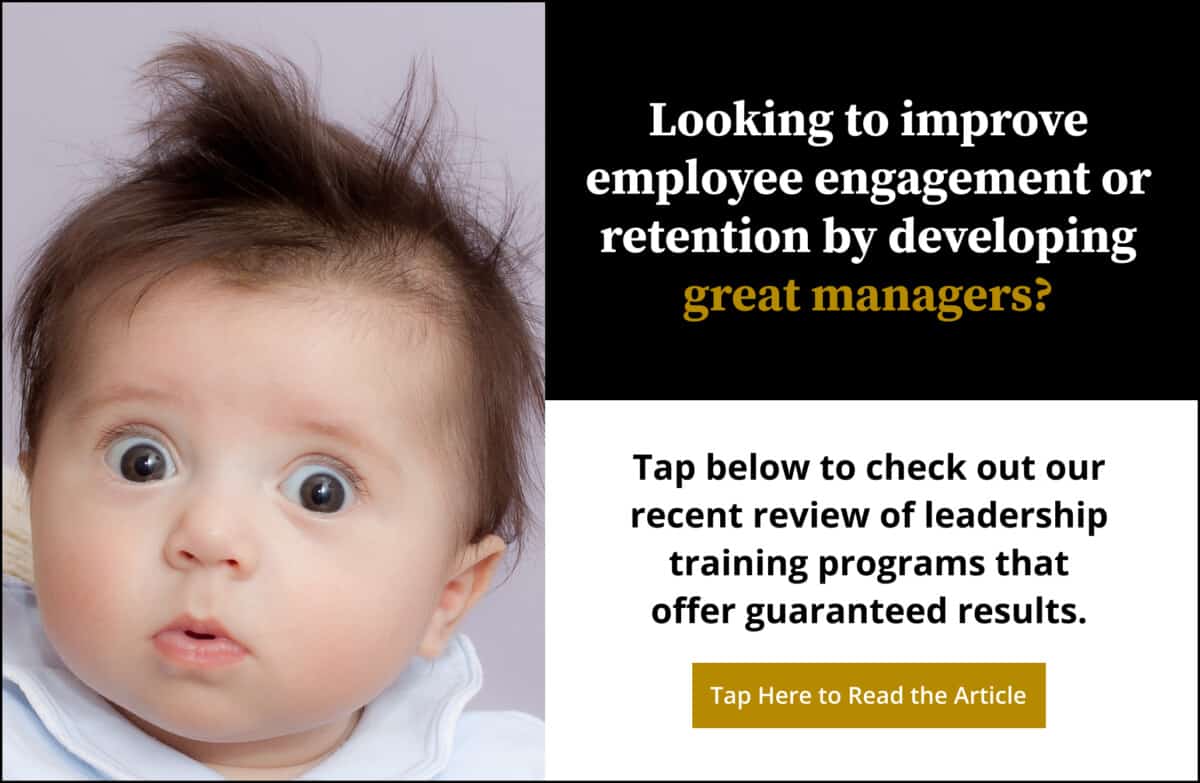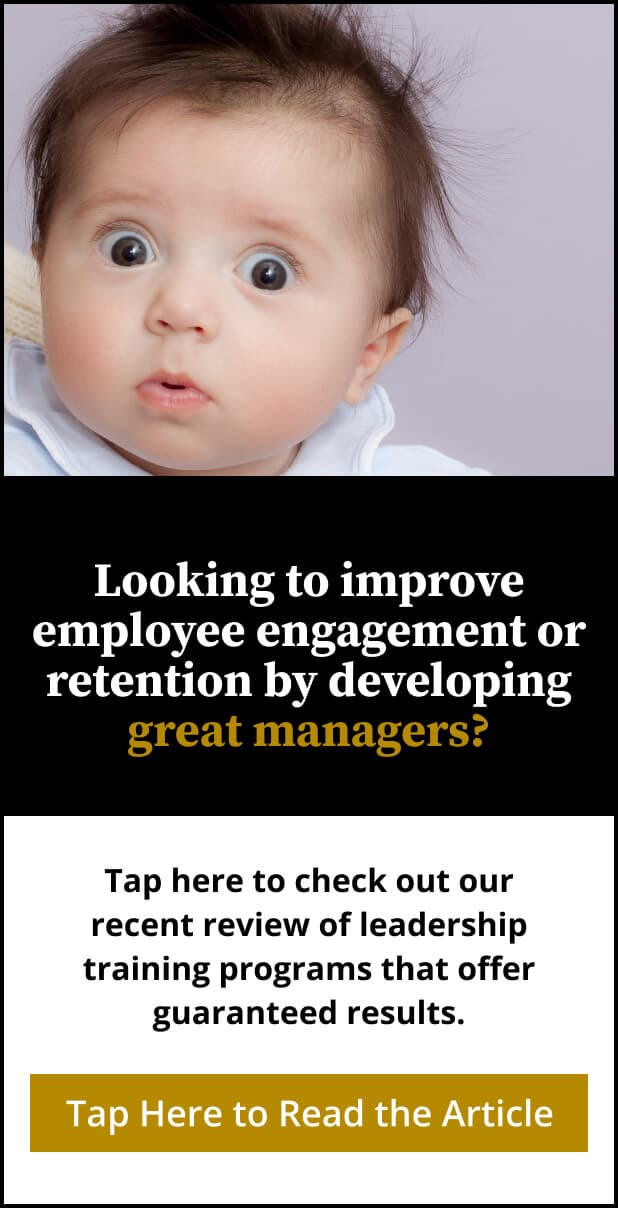Share:

A good employee retention rate is 90% or higher.
As we recently discussed, the average employee retention rate in the US for 2021 was quite low, at 52.8%. This number is almost certainly a reflection of the abysmally low employee engagement numbers we see yearly.
It can be challenging for organizations to implement retention strategies that will resonate with all employees because there are so many factors that can affect employee experience.
These factors can help or hurt engagement, which can significantly impact retention.
While these factors can vary across industries and sectors, there are four main factors that can push a worker to leave any job or make them decide to stay. I refer to these factors as “The Four Cs.”
The factors that encourage employee retention include an organization’s culture, the compensation it offers, its communication habits, and the opportunities it provides to employees for career advancement. To boost employee retention, leaders should utilize retention strategies that improve these areas.
In this article, we’ll explore these four factors and how they encourage retention.


Culture
In their newest book, Good Comes First: How Today’s Leaders Create an Uncompromising Company Culture That Doesn’t Suck, Business Leadership Today contributors Mark S. Babbitt and S. Chris Edmonds discuss how many company cultures are accidental (or incidental).
While the idea of workplace culture is widely known now, the term “culture” was a business world buzzword until fairly recently. Organizational cultures have often taken on the personalities of their founders or CEOs, with few organizational cultures being well-planned and intentional.
But Babbitt and Edmonds point out that organizations that are not intentional about their cultures or that are not values-driven are hit even harder when they lose talented, engaged employees.
According to Babbitt and Edmonds, “When highly-regarded leaders, mentors, and key contributors leave a company that hasn’t deliberately invested in their culture, the odds are good that culture, and especially that team’s sub-culture, will become even more accidental/incidental. Perhaps even toxic.”
This is because, when good employees leave, they take a piece of the organization’s culture with them. This can be disorienting to the employees who remain and leads to disengagement. It can also be confusing for new hires who can’t get a feel for the organization’s culture but see that their co-workers are disengaged.
Being intentional about culture is so important to grounding employees and building trust, and it is a key factor in retaining top talent.
Compensation
In his book Drive, Daniel Pink talks about the importance of intrinsic motivation (internal drivers for motivation) at work. These kinds of motivators build engagement and can increase the likelihood that an employee will stay with an organization.
While intrinsic motivation is vital to an employee’s engagement level and an essential component of the employee experience that makes workers more loyal to an organization, money matters.
Pink points out that when an employee isn’t paid an adequate amount, or if their pay isn’t equitable compared to others doing the same or similar work, their motivation will “crater.”
Without a decent salary and benefits that are attractive to potential employees, an organization will struggle to recruit talented employees; after they’re hired, they won’t stay without a salary that keeps pace with the cost of living.
Pink says, “The best use of money is to take the issue of money off the table… Effective organizations compensate people in amounts and in ways that allow individuals to mostly forget about compensation and instead focus on the work itself.”
Retention strategies should be informed by both the external and internal factors that drive employee motivation.
Communication
Strong communication can help organizations avoid turnover in several ways.
Communication can help build trust and promote transparency in the workplace by providing job clarity for employees, creating a culture of improvement through frequent feedback between employees and leadership, and establishing a system of recognition of employee contributions that lets employees know they are valued.
Job Clarity
When employees are unsure about what is expected of them in their roles, it creates a situation where they experience conflict on a daily basis about their duties and responsibilities.
In situations where job responsibilities and duties may shift regularly, clarity becomes even more important.
It’s essential for employees to know what is expected of them, have new duties and areas of responsibility clarified for them as situations change, and to be made aware that the work they do is seen by leadership.
Clearly communicating expectations, through regular one-to-one conversations for example, can be a great way to clarify job duties.


Feedback
Good communication between employees and management is an essential component of engagement, and establishing a system of feedback in your organization is a good way to hone those communication skills.
One of the ways feedback boosts engagement and retention is that it builds trust between leadership and employees, creating a safe, trust-based environment where employees feel that their opinions are valued and help drive decision-making.
In organizations that emphasize feedback as an important part of their culture, employees receive regular, helpful feedback from direct supervisors and are empowered and encouraged to provide meaningful feedback to co-workers and leadership.
This helps both employees and management know when to course correct or where improvements can be made.
This feedback habit can create a high-performance environment where employees have an improvement mindset and think about creative and innovative ways to help the company succeed.
Recognition
A Gallup study revealed that only one in three workers in the US and Germany strongly agreed that they received praise or recognition in the past seven days for their performance.
The workers who disagreed were twice as likely to say they’d quit over the course of the next year.
Recognition should always be part of the feedback leaders provide to employees. Recognition is such a powerful tool for building engagement because it meets a core human need for both the employee and the manager.
For recognition to be most effective, it should be genuine, and it should be specific and single out an employee’s efforts so employees know the work they do in their individual roles is seen and appreciated.
Career Advancement Opportunities
To retain employees, you have to motivate and engage them. One of the keys to motivating and engaging employees is helping them fulfill their need for mastery.
Employees need to feel that they are improving at something that is important to them. They will be more engaged in jobs where they feel they are growing professionally and developing their skills and intellectual capabilities.
Employees who feel they are growing in their jobs will be more likely to remain in those jobs because they know the organization is invested in their future.
Offering learning and development opportunities that help employees advance within the organization or within their field is a great way to engage and retain employees, and it’s also great for building your organization’s succession pipeline.
Whether it’s providing in-person or online training, tuition reimbursement, leadership development, career-pathing, or coaching, helping employees grow can yield tremendous results that benefit both the employee and employer.
Research compiled by LinkedIn has shown that when employees spend time learning on the job, they are 47% less likely to be stressed, 39% more likely to feel productive and successful, 23% more able to take on additional responsibilities, and 21% more likely to feel confident and happy.

Matt Tenney has been working to help organizations develop leaders who improve employee engagement and performance since 2012. He is the author of three leadership books, including the groundbreaking, highly acclaimed book Inspire Greatness: How to Motivate Employees with a Simple, Repeatable, Scalable Process.
Matt’s ideas have been featured in major media outlets and his clients include numerous national associations and Fortune 500 companies.
He is often invited to deliver keynote speeches at conferences and leadership meetings, and is known for delivering valuable, actionable insights in a way that is memorable and deeply inspiring.


